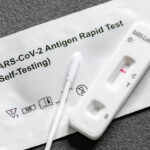The Private Sector’s Role in Preparing for and Responding to Public Health Emergencies
By Nicolette A. Louissaint, Ph.D., Executive Director, Healthcare Ready
This story was published in Ready or Not? 2017.
The private sector can often respond to rapidly changing circumstances nimbly and usually knows the communities they serve incredibly well. As such, amidst an emergency, there is opportunity for private organizations to step in and fill any response gaps.
The public sector takes on an enormous burden and works tirelessly to respond to emergencies, and the private sector sees its role, especially when it operates in affected regions, to surge alongside the public sector, pivot nimbly and augment public efforts—thereby enhancing the public system’s response efforts.
Often to take advantage of public and private sector expertise, there just needs to be a connection between the two.
For example, during the Hepatitis A outbreak in San Diego, public officials reached out to the private sector for help locating a significant amount of vaccines—since one of the solutions was to do a mass vaccination campaign.
Instead of suggesting they import or special order something (possibly at an extremely high cost), Healthcare Ready (HcR), my organization, checked the levels of vaccines in pharmacies in the area. We found the private sector had enough in stock to supply what was needed. Sometimes you just need to know how and who to ask.
As evidenced by this example, one important aspect of coordinating emergency response is sharing critical information. HcR is designated by the Department of Homeland Security as an information sharing and analysis center (ISAC). So, the private sector knows they can trust us with their proprietary information—and we won’t share with any outside parties inappropriately.
This designation also gives us a fuller view of the resources in a community during an emergency. For example, during a flood, we can know where emerging challenges in the medical pipeline might be because roads are not accessible. We can inform the public sector and work on a solution to ensure vital supplies make it to the public workers who are saving lives.
The public sector knows we can provide them with accurate status of response supplies and what is or isn’t happening along the supply chain. It’s absolutely vital for the public sector to know what kind of relief they’ll be getting and when and what might be missing so they can adjust on the fly.
What we’ve learned from 2017’s Hurricanes
After this hurricane season, we realized that the private sector can do a lot fast and rapidly fill gaps to supplement public sector efforts by getting around bureaucracy.
When faced with an emergency response, we initially focus on resuming supply chain operation and work to support any patients who might be falling through the gaps that naturally occur. The public sector can rely on us to gain insight into what the private sector sees—with us being a central hub coordinating private sector information.
One recent example: There was a small group of patients on St. Thomas who needed a specific drug that could only be prescribed every 30 days. The public sector folks asked us to look for ways to get the drug from Puerto Rico and onto a plane that was making routine trips between the islands after the hurricane.
As we looked into that, we also were able to reach out to the pharmacies on St. Thomas that we knew had re-opened. And we asked them to speak with their distributors who supply them with medicine. We actually found that one pharmacy had the necessary medicine and it was already on the island. We just had to connect the dots.
While this sounds easy written down, there are many competing priorities and everything is in flux during an emergency response. With the public sector relying on the private sector for these kinds of responsibilities it can free them up to handle other vital activities.
How we can better use the private sector?
While there many examples of public and private sectors working well together, too often the private sector is only looked at a supplier, notably of money and medicine, which is frustrating because clearly the private sector wants to and can help in other ways.
This might seem like a minor problem—but if the public sector is only engaging with the private sector amidst a crisis or when money is needed, the relationships aren’t developed that are necessary to work alongside one another during an emergency. A lot of emergency preparedness and response is about knowing the right organization or person to contact to obtain the life saving measure/supply you need.
Currently, in most places, states have just one Emergency Management Coordinator for the entire private sector—encompassing industries like transportation, healthcare, agriculture, food, etc. It really isn’t feasible for the level of coordination that needs to happen to go through a single node.
As such, there should be a coordinator for each industry, setup in advance with regular meetings to fold private sector emergency capabilities into the public sector’s response plans—so when a hurricane makes landfall we all know what to do.

